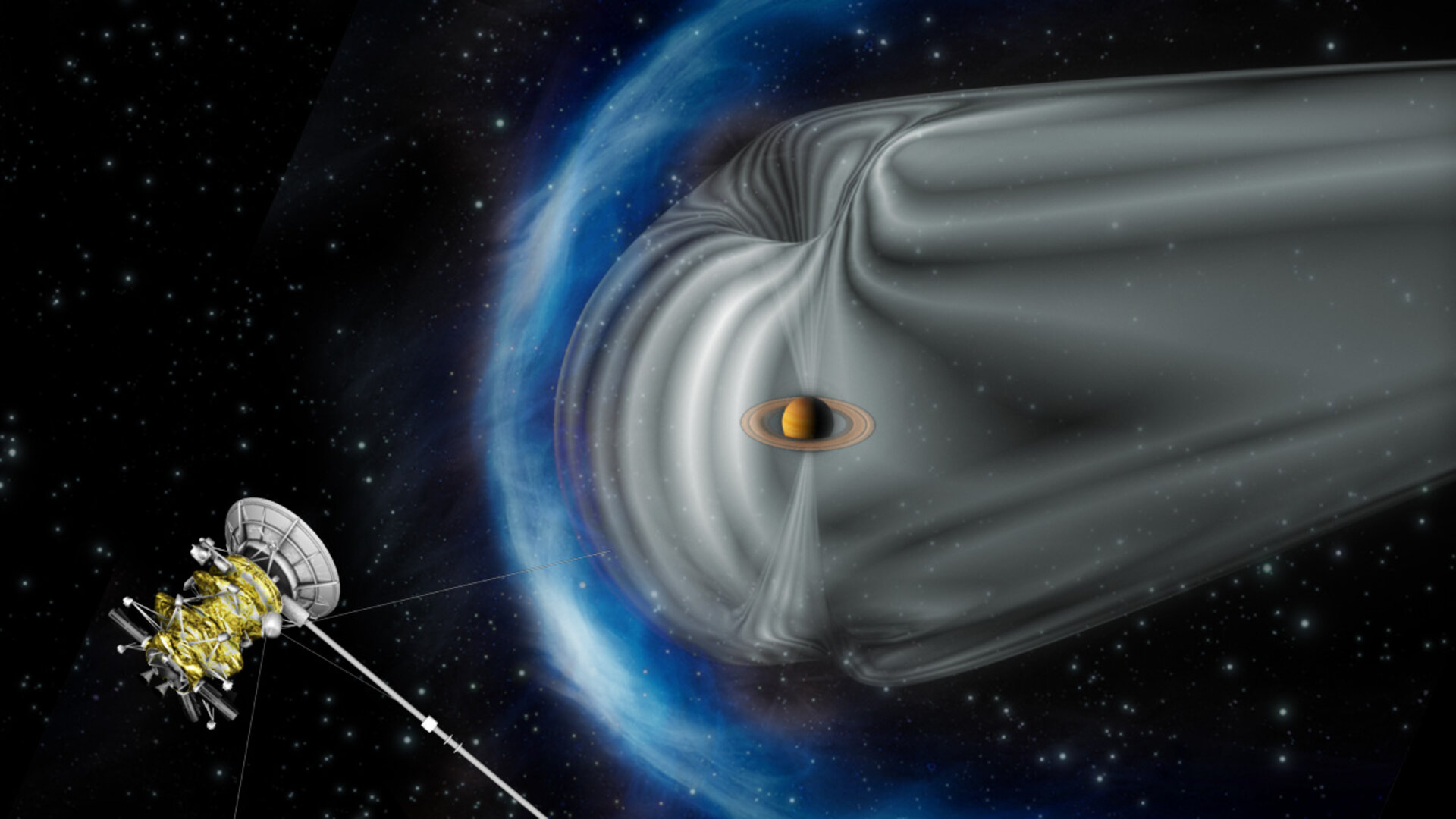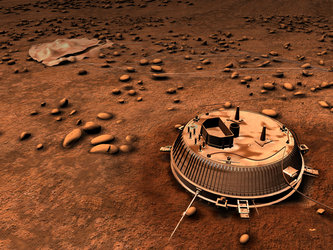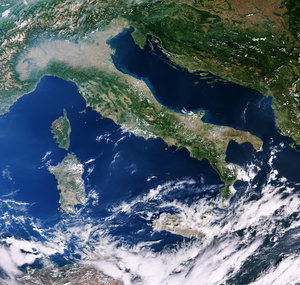Saturn's magnetosphere
The magnetosphere is an area of space, around a planet, that is controlled by that planet's magnetic field.
Saturn is surrounded by a giant magnetic field, lined up with the rotation axis of the planet. This cannot be explained by current theories. Cassini may explain how the puzzling magnetic field of Saturn is generated.
This magnetic field may also cause strange features in the rings called ‘spokes’. These markings fall across the rings like spokes in a wheel and may be caused by electrically charged particles caught up in the magnetic field, but there are as yet no detailed theories about them.
The brief reconnaissance encounters of the Pioneer 11 and the two Voyager spacecraft have provided most of our current information about the structure and dynamics of Saturn's magnetosphere.
Here are some things that we knew prior to Cassini's arrival:
- Saturn's 'bow shock', the region point where the solar wind and the planet's magnetic field meet, much like the bow wave of a ship, is between 20 and 35 times Saturn's radius out into space.
- The thickness of the bow shock is about 2000 kilometres.
- Saturn's internal magnetic field is closely aligned with the planet's axis of rotation (within 1 degree).
- Saturn's magnetosphere appears to be intermediate in nature to those of Earth and Jupiter. As with Jupiter's magnetosphere, the dayside inner magnetosphere is mostly driven by the fast planetary rotation. However at night, it is expected that the nightside and outer magnetosphere is primarily driven by the solar wind, as is the case on Earth.
- There is an electrical current (the 'equatorial ring current') flowing with about 10 000 000 Amps around 600 000 kilometres above Saturn.
- Saturn Kilometric Radiation (SKR) is the principal radio emission from Saturn. SKR is believed to be linked to the way electrons in the solar wind interact with the magnetic field at Saturn's poles.















 Germany
Germany
 Austria
Austria
 Belgium
Belgium
 Denmark
Denmark
 Spain
Spain
 Estonia
Estonia
 Finland
Finland
 France
France
 Greece
Greece
 Hungary
Hungary
 Ireland
Ireland
 Italy
Italy
 Luxembourg
Luxembourg
 Norway
Norway
 The Netherlands
The Netherlands
 Poland
Poland
 Portugal
Portugal
 Czechia
Czechia
 Romania
Romania
 United Kingdom
United Kingdom
 Slovenia
Slovenia
 Sweden
Sweden
 Switzerland
Switzerland
































